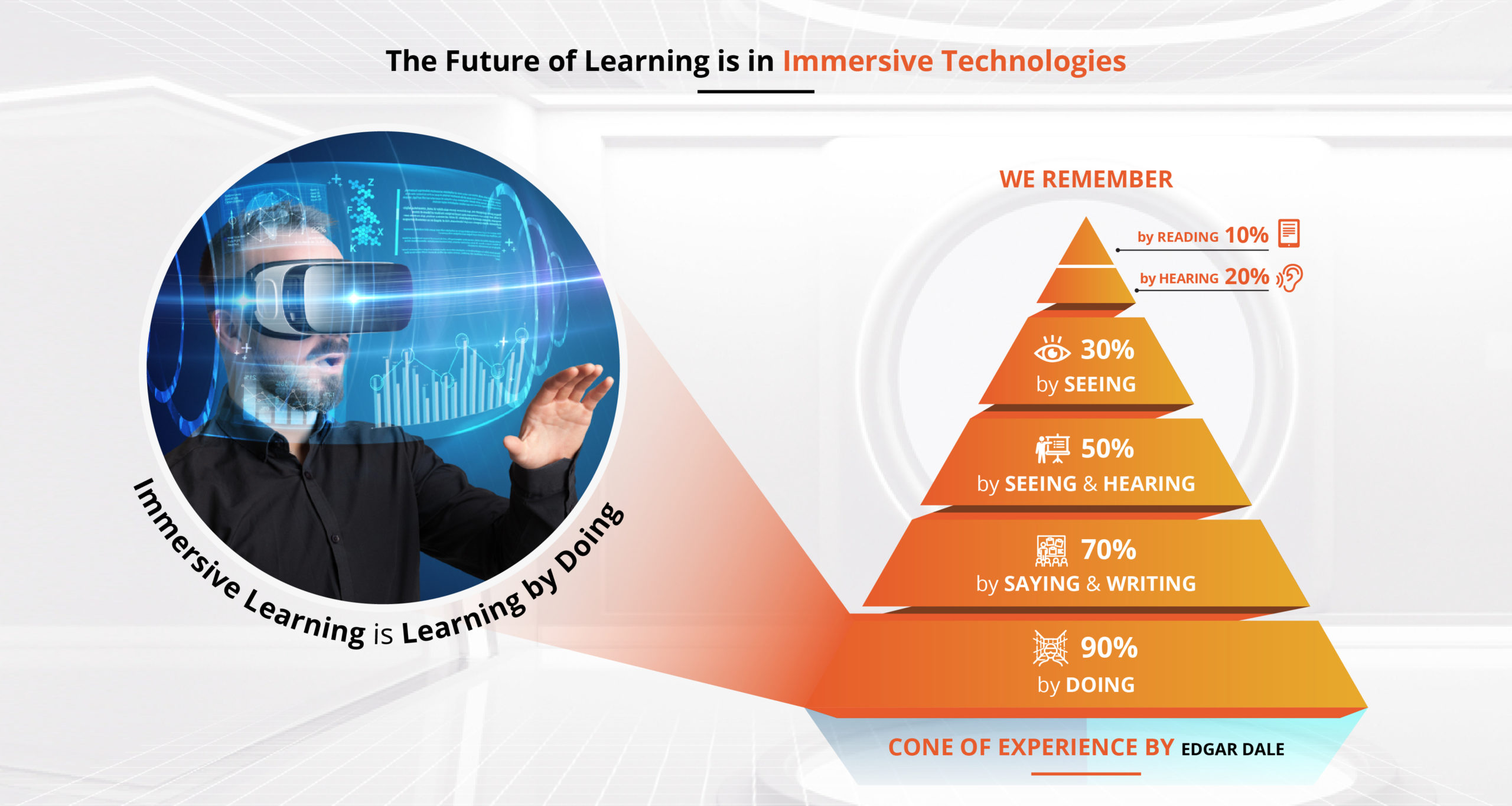The act of immersion is a powerful tool. According to Edgar Dale’s Cone of Experience, the greater the number of senses involved in the learning process, the more effective learning will be.
Learners have graduated from being mere spectators to becoming more involved in deciding what would contribute to their training. Learners step right into the course environment where they receive a unique opportunity to experience all round interactive knowledge and skills development.
Immersive technologies not only engage learners, but also provide a more stimulating, easier to learn and clearly descriptive course in a fun way! Immersive technologies such as Augmented Reality (AR), Virtual Reality (VR), or Mixed Reality (MR) environments are leading the way towards an enhanced learning future.
Why could Immersive Technologies be the Future of Learning?
When we are running for a learning intervention that would be required by a complex, experienced-based occupation such as to perform a surgery, fly an airplane or operate heavy machinery, immersive technology offers total engagement in a simulated environment for a deeper understanding and better learning capacity.
1. Learning by Doing
As we intend to transfer knowledge and skills to be ready to apply once the learner undergoes training, the virtual environment assists the brain to retain and apply the same. It also specifically assists learners to experience an event from another person’s point of view. In a vast application such as the immersive learning program empathy by Walmart, the critical decision making, impact analysis, and key message being learned has a much greater effect than when applying a traditional training method.
2. Collecting Learner Data During Training
There is no standard method for collecting data in a traditional training setup, but an immersive environment allows the gathering of both soft and hard metrics, which exceeds routine pass or fail procedures.
3. Equipment Accessibility
In the learning department, COVID poses a challenge for real-time equipment-based training however, thanks to immersive technology, this is not a problem anymore. We can develop scenarios such as life-size model city blocks, a patient to be used in medical training, a vehicle needed for automotive training and more. The Imperial College in London used HoloAntomy HoloLens software technology to deliver a clinical live stream to its medical students.
4. Regular Training Update
As immersive training scenarios are software based, they can be updated more easily than a live-session training environment that may require new equipment or facilities. Immersive training software accurately gathers metrics such as attendance, time, number of completions and employee improvements to further update and improve the training program.
5. Audience and Training Cost
In sectors where a traditional training environment could pose health and safety risks, the immersive training environment would allow learners to test valuable skills and explore the outcome of their decisions with no threat to their safety or damage to costly equipment. It also allows repeated training sessions with multiple different scenarios for any number of employees without cost increase.
Immersive learning offers a great potential to speed up the attainment and retention of knowledge and skills in the learning industry. The critical success factor is to be able to deliver the right content for each learner to achieve the desired learning outcome.
Have been you looking for a stimulating, easier to learn, and descriptive course in a fun way, contact G-Cube to know more about this new age solution.
Note: If you think Virtual Reality trainings can burn your budget, then please have a look at this infographic, which explains how to Create a VR Based Learning at the Price of an E-learning Course.









